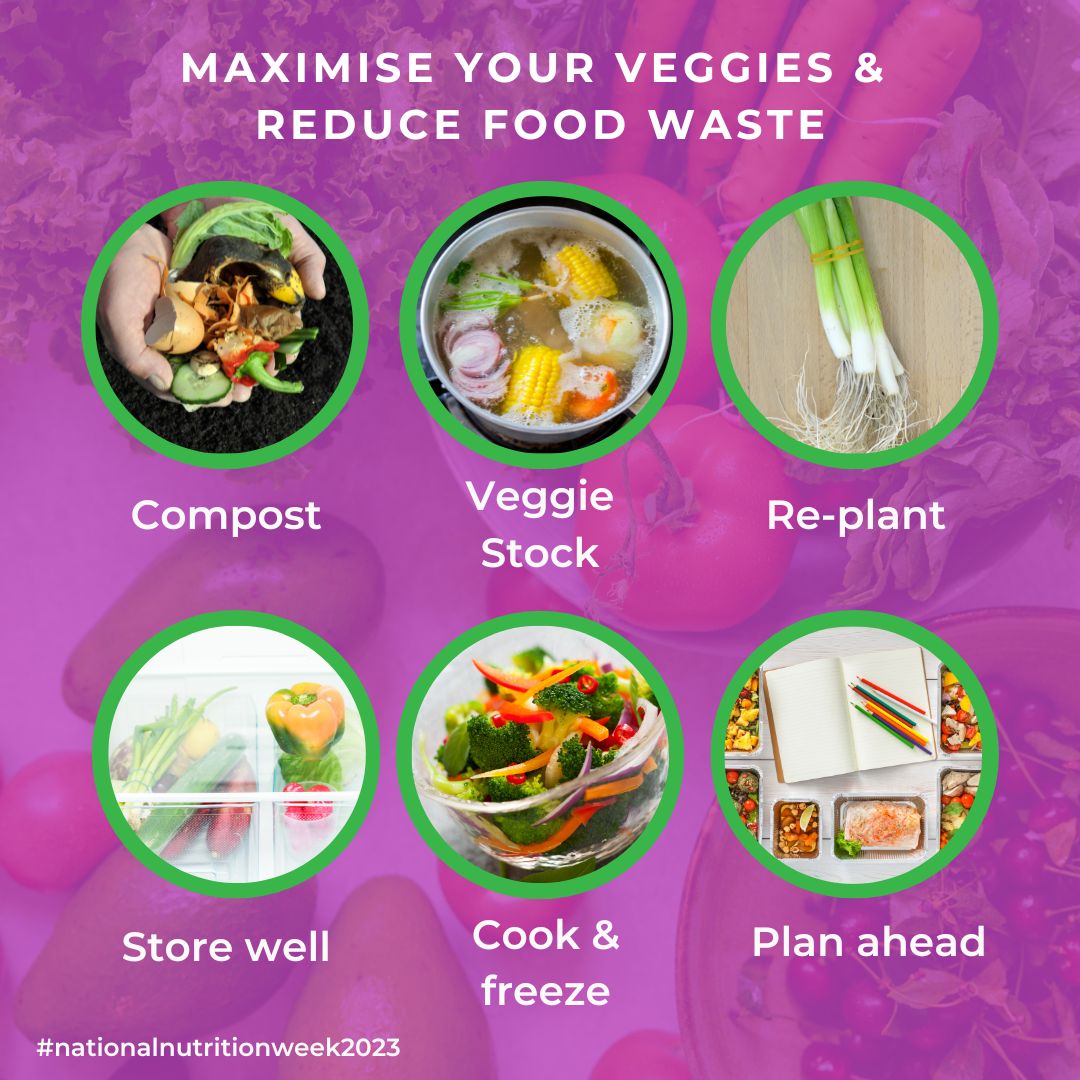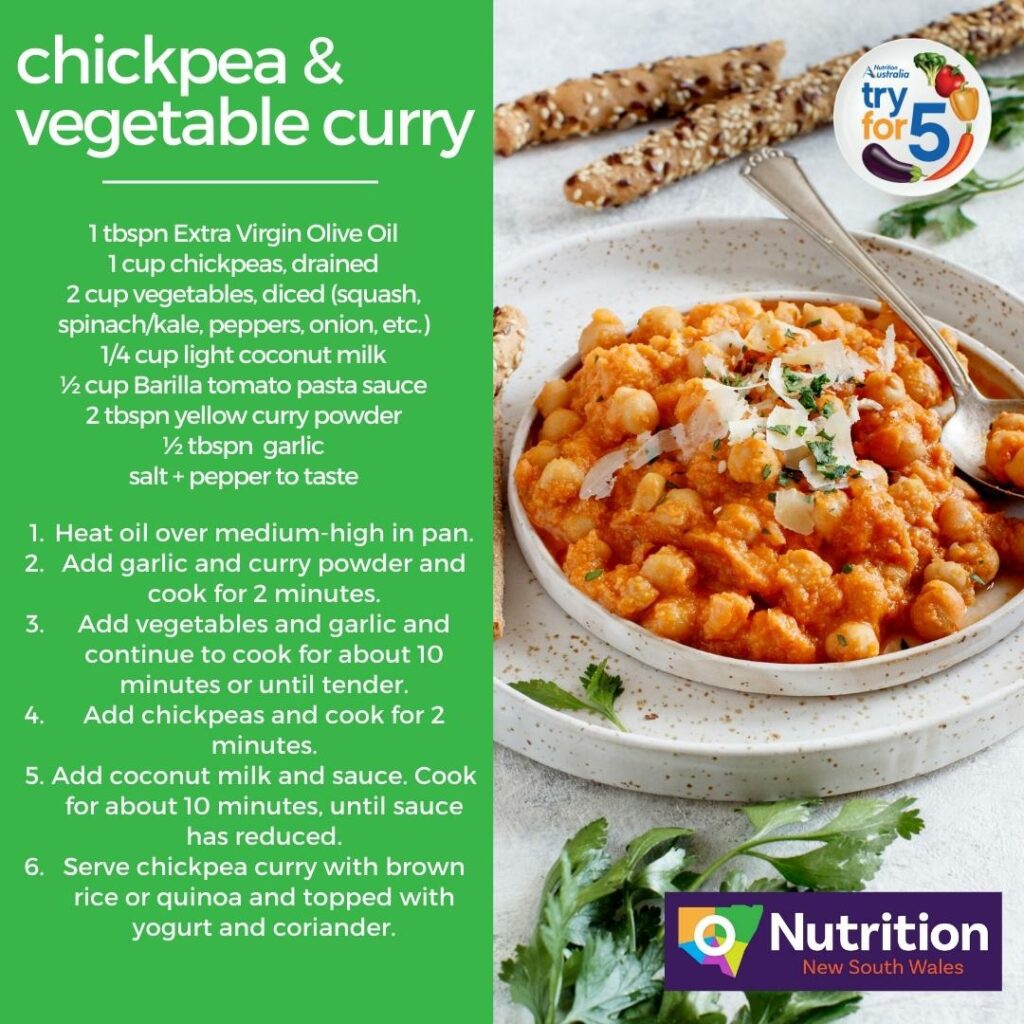Events
Explore upcoming events. Members get discounts on national events and webinars and email updates on upcoming events in their area.
How to Pack a Healthy Lunchbox Webinar Series

Schools often tell us that parents are not sure how to make lunchboxes healthy for their child, so we’ve teamed up with Sydney Local Health District to bring you a two part webinar series for your school parents, carers and families.
Simply join us online for these two FREE webinars:
- Part 1: Tuesday, 26 March 2024, 12pm to 1pm
- Part 2: Wednesday, 27 March 2024, 12pm to 1pm
Different topics will be covered for each day including:
- How to pack a healthy lunch
- Healthy food swaps
- Food labelling
- Healthy snacks
Cooking demonstrations
Click here to find out more and register.
National Nutrition Week
National Nutrition Week is a campaign drawing focus of the positive benefits on both our mental and physical health through consuming good nutritious food.
Try for 5 aims to inspire Australians to enjoy vegetables through highlighting the fun and creative ways Australians can incorporate veg into their day. The Australian Dietary Guidelines recommend at least five standard serves of vegetables per day should be consumed for good health, but with only 7% of adults an 5% of children eating the recommended serves of vegetables each day, Nutrition Australia created this campaign to raise awareness of the benefits of eating vegetables.
Total vegetable consumption, fresh and processed, has been steadily declining year on year, suggesting Australians consume 13 kilos per year less vegetables per capita than they did in 2001. It is estimated that only 55% of vegetables produced are consumed due to losses in the supply chain and wastage in the home.



So, why do vegies count?
Vegetables are vital for good health, and inadequate consumption can have serious health consequences from pregnancy to end of life. Vegetables contain a range of nutrients including fibre, carbohydrates, protein, vitamins, minerals and phytochemicals. Many studies show that a diet rich in a range of vegetables is a critical part of preventative health, such as reducing risk of high blood pressure, and lowering the the risk of developing certain chronic diseases such as Type 2 Diabetes, heart disease, some cancers, eye, and digestive problems. Eating adequate vegetables also has a direct linkage to maintaining a healthy weigh, therefore having a key role in obesity prevention.
Getting more veg in your day!
So, we are here to help you get more veg in your day! Whether they’re fresh, canned or frozen, eating more vegetables is the number one thing we can all do for better health and wellbeing.
Check out these 5 easy ways to increase vegies in your day:
- Eat a rainbow. When grocery shopping choose vegetables of every colour. Look over your trolley – can you see a rainbow?
- Try a new recipe each week. Have you seen our recipes? We have a great range of healthy nutritious and budget-friendly recipes for you and your family. Click here (link to page)
- Each week try a new vegetable, this can be super fun for kids too. Get them to choose the new vegie and introduce it into a weekly dinner.
- A great budget-friendly trick is to add legumes to bulk up meals. Throw a tin of kidney beans into your next mince-based meal, chickpeas in a salad or make a lentil dahl.
- Chunk up your smoothie with vegies! Have you seen our new Green Power Smoothie recipe? It’s just in time for National Nutrition Week!
What is in a serve of vegetables?
Not sure what a serve of vegetables looks like? How should you be grocery shopping or planning your meals to make sure you get enough vegetables for optimal health, as well as reducing your food waste?
A standard serve is about 75g (100–350kJ) or:
- ½ cup cooked green or orange vegetables (for example, broccoli, spinach, carrots or pumpkin)
- ½ cup cooked dried or canned beans, peas or lentils (preferably with no added salt)
- 1 cup green leafy or raw salad vegetables
- ½ cup sweet corn
- ½ medium potato or other starchy vegetables (sweet potato, taro or cassava)
- 1 medium tomato
Remember, the amount of vegetables children should consume depends on their age, appetite and physical activity levels. After about nine years old, children should eat the same serves of vegetables as adults – meaning that kids can also aim for five a day.
Still not sure? Reach out for a one-on-one consultation with one of our Accredited Practising Dietitians.


How to make the most of your weekly food shop
The Food Sustainability Index 2017 revealed Australia has the highest food waste generation per capita, with young people aged between 18-24 and families with young children the biggest wasters of food.
Food waste in Australia is an increasing problem and it is growing at an alarming rate. It’s estimated Australian households throw $2000-$2,500 worth of food in the garbage each year. This is the monthly budget for the average household.
When we throw out food, we are wasting the water, fuel and resources it took to get the produce from the farm to your table. As well as contributing to global greenhouse gas emissions. Approximately 10 percent of global greenhouse gas emissions come food wasted. In Australia, this represents 17.5 million tonnes of CO2 each year.
Australia is committed to the United Nations Sustainable Development Goal to half food waste by 2030. To reduce waste in your home, check out our blog here.
Are you on budget? We have you covered! Read more here.





